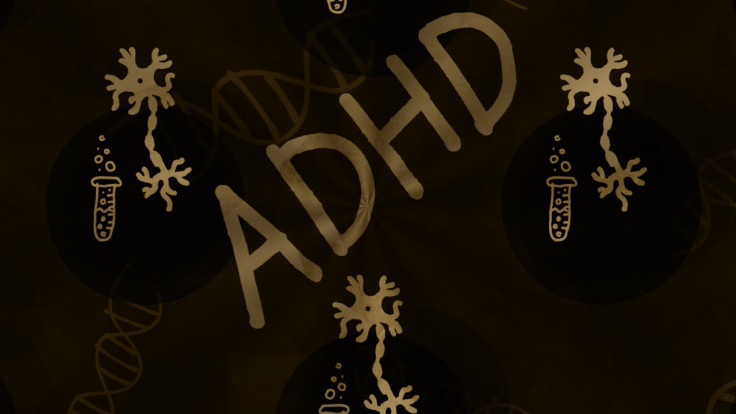ADHD Awareness Month: Expert Dispels Common Misconceptions About The Condition

ADHD Awareness Month is celebrated every year in October to raise awareness about attention-deficit/hyperactivity disorder, a common mental health condition often misunderstood by many.
The theme for this year's celebrations, "Moving Forward With ADHD," is designed to provide reliable information regarding ADHD and available treatment options.
ADHD is often misunderstood as it has symptoms similar to other disorders like anxiety and depression. Sometimes people even fail to recognize it as a real disorder and dismiss the symptoms as something that stems from a lack of willpower or an excuse for laziness.
Types of ADHD
1. Inattentive and distractible - A type of ADHD in which people show symptoms of distraction, poor concentration and organizational skills.
2. Impulsive/hyperactive - The least common type of ADHD in which people show signs of hyperactivity, such as constant fidgeting and impulsive behavior.
3. Combined type - It is the most common type of ADHD where people have symptoms of both inattentive and hyperactive disorders.
To raise awareness about the chronic neurodevelopment disorder, an expert dispels some common myths and also shares facts about the condition.
Myth 1: Adults do not have ADHD
Fact: ADHD is typically first diagnosed in childhood, however, symptoms continue into adulthood in more than three-quarters of cases.
The disorder affects about one in 10 school-aged children and the prevalence rates of ADHD among adults vary based on the source examined.
"Even with varying prevalence rates, the research shows adults do have ADHD. According to the National Institute of Mental Health (NIMH), the overall current prevalence of adult ADHD in the United States is 4.4%, with prevalence being higher for males (5.4%) than females (3.2%). The lifetime prevalence for adult ADHD according to the NIMH is 8.1%. A 2021 study by Song and colleagues found that more than 366 million adults worldwide have ADHD, as of 2020 and the World Mental Health Surveys (2017) found the aggregate prevalence of ADHD in adults across 20 countries was 2.8%," Jessica Rabon, a licensed clinical psychologist from South Carolina, told Medical Daily.
Myth 2: All kids outgrow ADHD
Fact: The symptoms of ADHD in adulthood may vary from childhood.
"The inattentive symptoms in children may present as forgetfulness or losing things necessary for tasks and not listening when spoken to. Children with symptoms of hyperactivity may constantly seem to be on the go, climbing on things, squirming or fidgeting. Impulsiveness, often a component of hyperactivity, may look like cutting in line, blurting out answers to questions before the question is completed, acting without thinking of consequences or interrupting others," Rabon said.
However, these symptoms vary in adults and present differently as the type of interactions and responsibilities evolve.
"For adults, inattentive symptoms have a greater persistence in adulthood and adults tend to show less hyperactive and impulsive symptoms. In adulthood, hyperactive symptoms become felt more internally than externally shown and are experienced as general restlessness," she explained.
Myth 3: ADHD always requires treatment with medicine
Fact: Treatment of ADHD may include a combination of various strategies such as therapy, medications and accommodations.
- Medication includes the use of stimulants and drugs such as atomoxetine.
- Therapy may involve parent training in case of children, and psychoeducation about ADHD and skills such as time management, organizational skills and relationship skills for adolescents and older adults.
- Accommodations are adjustments made in the environment, such as classrooms or offices, to help people with disabilities enjoy an equal footing, allowing them to access the same benefits and opportunities available to others.
Rabon believes accommodations can help set individuals with ADHD up for success.
"Accommodations would look different depending on the individual, but in school may include things such as extra time on tests, getting to take tests in a distraction-free area or preferential seating. At work, this may look like calendar reminders for meetings, having a standing/walking desk, or having a private workspace. Additionally, some individuals with ADHD may benefit from ADHD coaching or ADHD support groups/communities," the psychologist said.
Myth 4: ADHD is caused by bad parenting
Fact: There is no evidence that bad parenting causes ADHD, but poor parenting may make symptoms worse.
To dispel the common myth about bad parenting, it is important to understand the possible causes of the brain-based biological disorder.
"There is a large genetic component to ADHD, meaning that if a parent has ADHD their child is at increased risk of also having ADHD. Other contributing factors include brain injury, exposure to environmental risks in pregnancy or early childhood, alcohol and tobacco use during pregnancy, premature delivery, and low birth weight," Rabon said.
"I believe parents often get blamed because people don't understand what ADHD is. They see a young child acting out and blame the parents for not 'parenting' their kids without knowing the full picture. I also think it is easier to pass judgment on parents or find something quick to blame rather than consider that a child may have a neurodevelopmental difference, particularly if the person passing the judgment is not a parent themselves or is a parent to a neurotypical kid who does not experience the same challenges," she added.
Published by Medicaldaily.com



























